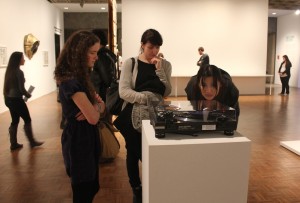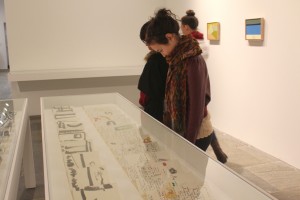The Whitney Museum is the museum of American Art. The Whitney Biennial then is nothing less than America’s show—a curatorial celebration of now: the artists, the key pieces, the strategies, the influences, the rising stars and the perennial favorites. This year the Biennial tried a new approach to composing this grand collection. Rather than a team of curators working together to gather and assemble the works, three curators were chosen to work independently, each tackling a separate floor. Stuart Comer, chief curator of media and performance art at MOMA; Anthony Elms, associate curator at the Institute of Contemporary Art, Philadelphia; and Michelle Grabner, artist and Professor in the Painting and Drawing Department at the School of the Art Institute of Chicago each brought their own unique perspectives the Biennial, unencumbered by compromise or collaboration.
However, the success of this new approach is less firmly decided. Each floor contained a lofty theme and curatorial statement of purpose, however the work that filled the familiar galleries of the Whitney seemed chosen and arranged with little regard to any specific criteria, much less the evocation of precise premises. Indeed, the entire museum was veritably stuffed with art. Often the audience was barely able to view a painting without backing into a sculpture placed only a few feet away. From wall text to floor layout, the exhibition design was uncomfortably reminiscent of the sales floors of the Armory show.
Nevertheless, among this disorganization, the quality of the work was still breathtaking. The video pieces stood out this year, including Lucien Castaing-Taylor and Véréna Paravel’s 2012 film Leviathan, a beautifully disturbing ethnographic investigation into the fishing industry. Matter of fact, starkly documentarian, and unbelievably generous, diving out of the cluttered brightness of the Whitney and into the darkness felt like immersing oneself in a different world altogether.


